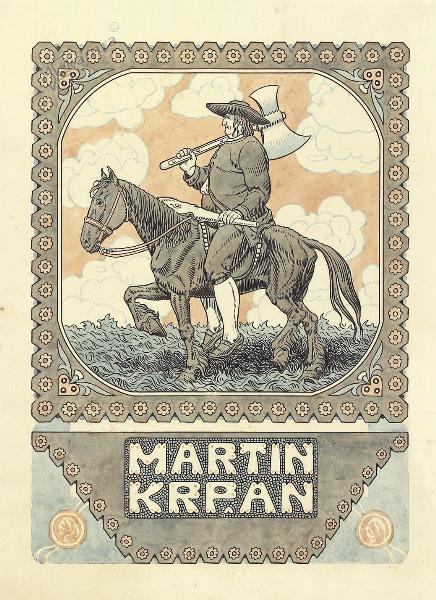
In an era when Slovenians were ruled from Vienna by the Hapsburgs, authentic home-grown heroes were rare. However, an unstoppable combination of strength, determination, and ingenuity helped to transform one hero from a folk legend into a very real symbol of Slovenian national pride.
It was the Slovenian writer Fran Levstik who first brought the story of Martin Krpan to the wider public when he published a short story about Krpan’s adventures in 1858. The origins of the story are much older, however. Various elements of the legend had been passed down from generation to generation in the wooded, sparsely populated Slovenian province of Inner Carniola.
According to Levstik’s story, Matin Krpan was a brave, strong man who lived in a remote village and made his living by transporting salt – illegally – from the big ports of the Adriatic to various places in the Hapsburg Empire. He made his journeys on the back of a small but trusty mare. One day on the road, he encountered the Emperor’s carriage. Even though he did not recognize the Emperor, Krpan single-handedly picked up his mare – carrying a full load of salt – to make way for the oncoming carriage. The emperor observed Krpan’s feat and was so impressed by his strength that he called him to the Imperial capital.
At the time, according to the story, an evil man named Brdavs was laying siege to Vienna. He had already destroyed the army and killed the Emperor’s son. It was up to Krpan to save the Empire. At first, he embarrassed himself when his brute strength caused him to destroy the weapons he had been given. In the end, however, Krpan destroyed Brdavs and became acclaimed as a hero. The Emperor even allowed him to transport his salt legally from then on.
Today, the gentle giant is a universally recognized icon in Slovenia. His hulking features, as imagined by the 20th century painter Tone Kralj, became as familiar to schoolchildren as many real historical figures. He has been featured in comic books, puppet plays, and television programs.
Most of all, Martin Krpan’s quiet strength and dignity came to symbolize the potential of the Slovenian people. Long before Slovenia’s independence, Martin Krpan was embraced as a hero by a nation that had long been subjected to foreign domination and was rediscovering its national identity. Krpan was proof that Slovenians could make a difference – and even change the course of history if necessary. At the time when his people most needed inspiration, Martin Krpan turned from a folk hero into a very real symbol of national pride.

































































